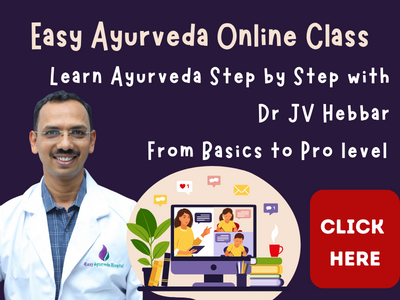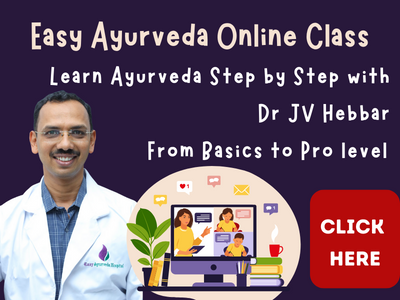Article by Dr Raghuram Y.S. MD (Ay) & Manasa S, B.A.M.S
Dystonia is a neurological dysfunction. It’s characterised by uncontrollable muscle contractions. These contractions would result in involuntary actions or irregular postures. It could actually have an effect on completely different elements of the physique and even the complete physique. The manifestation is dependent upon the underlying trigger.
Signs of Dystonia embody uncontrolled and painful spasms of muscle tissues, repetitive actions, tremors occurring in rhythmic sample, muscle contractions lasting from seconds to minutes (persists for months in persistent circumstances), and muscle twist or stretch resulting in uncommon physique positions. Relying on the world of the physique concerned it presents in 5 patterns – focal, segmental, multifocal, hemi dystonia and generalized dystonia. Every current with a distinct set of signs pertaining to the area troubled.
Associated Studying – ‘Dystonia – causes, signs, prevention, remedy’
On this article we’ll attempt to perceive dystonia from an Ayurveda perspective.
Dystonia: Ayurveda Understanding
Any single situation defined in Ayurveda can’t be precisely correlated with dystonia. Many circumstances defined, primarily within the context of Vata Vyadhi will be mentioned in correlation to Dystonia attributable to similarity of those circumstances when it comes to their scientific presentation, regardless of not precisely matching with one another as a illness entity. This understanding helps in addressing and managing circumstances of dystonia by means of Ayurveda interventions.
Under talked about are the completely different circumstances defined in Ayurveda treatises, which will be thought of on this dialogue, as circumstances resembling with scientific image of Dystonia –
Vata Prakopa
‘Sankocha’ is a symptom talked about amongst the signs of vata aggravation. Sankocha means contractions. Dystonia is characterised by uncontrolled muscle contractions. Sankocha can also be a phrase used to explain spasms and contractures, that are options of dystonia.
Equally, ‘Chaala’ i.e. extreme actions which depicts ‘irregular and uncontrollable muscle contractions’ which is a function of dystonia, too has been talked about amongst the actions of irregular or exaggerated vata.
‘Varta’ which suggests twisting or twitching, which is an impact of dystonia, can also be a symptom of vata prakopa.
Yet one more time period ‘Spandana’ which suggests involuntary actions or twitching, can also be considered one of vata prakopa signs.
Vata Nanatmaja Roga
There are 80 circumstances that are precipitated solely by aggravated vata.
Some circumstances / ailments talked about within the record clarify ‘dystonia’. They’re –
Akshepa – which suggests convulsions, which is completely different from involuntary contractions. However this time period will be thought of to explain dystonia. It may be mentioned to be a variant of spandana and sankocha. All these phrases pertain to ‘hyperactivity of vata or chala guna of vata’.
Vepathu / Kampana – means tremors. These phrases too point out hyperactivity of vata and involuntary actions, as in dystonia.
Vata Vyadhi
Seeing the final description of dystonia, it may be labeled beneath Vata Vyadhi – particular issues attributable to vitiation of ‘solely vata’. It’s a neurological dysfunction and all neurological issues are mentioned beneath Vata Vyadhi. This situation is characterised by uncontrollable muscle contractions which in flip ends in involuntary actions or irregular postures. Aggravated Vata is accountable for such muscular occasions.
Mamsagata Vata (a vata vyadhi)
Since this situation impacts the muscle tissues and trigger uncontrollable contractions and involuntary actions, it may be correlated with one more illness which has been defined beneath Vata Vyadhi i.e. Mamsagata Vata. Mamsagata Vata is a situation wherein aggravated vata which will get localized within the muscle tissues of the physique would trigger these muscular occasions.
Sarvanga Vata and Ekanga Vata (a vata vyadhi)
Since this situation could have an effect on completely different elements of the physique and even the complete physique, it falls beneath the class of Sarvanga Vata – a situation wherein aggravated vata impacts the entire physique. When a specific a part of the physique is concerned, it may be thought of as Ekanga Vata. Dystonia kind of presentation will be seen in each Ekanga and Sarvanga Vata.
From the angle of signs and forms of dystonia
The signs of Dystonia which incorporates uncontrollable and painful muscle spasms, repetitive actions, tremors, twisting, irregular postures, irregular stretching of muscle tissues are all contributory to aggravated vata.
Signs of various kinds of dystonia cowl beneath their umbrella, various kinds of Vata issues together with – Ekanga Vata, Sarvanga Vata, Pakshavadha, Ardita and Kampavata. So, dystonia covers a broad spectrum of Vata issues which incorporates the talked about circumstances.
From the angle of causative components
Among the many causes of Dystonia, Parkinsonism, Epilepsy, Stroke and Traumatic Mind accidents have been talked about. Signs of dystonia are discovered within the Ayurveda counterparts of those circumstances i.e. Kampavata, Apasmara, Pakshavadha and Abhighata / Marma Abhighata respectively.
From the angle of issues
Problems like impairment in each day actions, issues with muscle contractions of eyes, jaw motion, swallowing, speech, discomfort, exhaustion and nervousness point out involvement of vata.
Dystonia: Ayurveda Therapy Ideas
Nidana Parivarjana
Similar to in any illness, maintaining away the causative components and triggers of the illness is essential in prevention and remedy of dystonia and likewise to forestall the development and issues of dystonia. From the Ayurveda viewpoint, all ‘vata aggravating’ etiological components is likely to be accountable for dystonia and all these components shall be saved away.
Treating Vata
As already mentioned, aggravated vata is especially accountable for dystonia and its signs and issues. Subsequently, all medicines, therapies, way of life modifications and practices which might deliver again vata to a state of steadiness shall be thought of within the remedy of Dystonia.
Therapy on the strains of ‘Vata Vyadhi Chikitsa’
The remedy rules of Vata Vyadhi shall be introduced into apply to comprehensively deal with dystonia. This contains medicines, therapies, dietetic and way of life modifications.
Different remedy rules
Dystonia shall be handled on the rules of remedy of under talked about circumstances –
– Ekanga vata
– Sarvanga vata
– Pakshavadha / Pakshaghata
– Ardita
– Mamsagata Vata
– Kampavata
– Apasmara
Efficient exterior therapies
Under talked about exterior therapies are extremely efficient within the administration of Dystonia –
– Abhyanga – natural oil therapeutic massage – any vata mitigating oil can be utilized
– Swedana – sudation – Nadi Sweda, Bashpa Sweda, Pinda Sweda (patra and shashtika shali pinda sweda)
– Dhara – showering of medical liquids on the physique and head – any vata-mitigating oil or milk processed with vata-alleviating herbs shall be used
– Murdni Taila – oil therapies finished on the pinnacle – Shiro Dhara, Shito Vasti, Shiro Abhyanga, Shiro Pichu
Efficient Panchakarma Therapies
Dystonia and its issues will be successfully dealt with by administration of the under talked about Panchakarma measures skilfully –
– Virechana – on the strains of Pakshaghata Chikitsa – with medicated purging oils which might steadiness vata
– Vasti – Asthapana Vasti and Anuvasana Vasti shall be mixed skilfully, Matra Vasti too is helpful
– Nasya – errhines with vata assuaging oils can be helpful
Useful herbs
– Bala – Sida cordifolia
– Ashwagandha – Withania somnifera
– Kapikachchu – Mucuna pruriens
– Guduchi – Tinospora cordifolia
– Dashamula – ten roots
– Medhya Rasayanas – herbs that are mind tonics
– Kushmanda – Benincasa hispida
Useful formulations
– Maharasnadi Kashayam
– Erandamuladi Kashayam
– Ashtavargam Kashayam
– Balaguluchyadi Kashayam
– Dhanwantaram Kashayam
– Gandharvahastadi Eranda Taila
– Nimbamritadi Erannda Tailam
– Balarishtam
– Ashwagandharishtam
– Saraswatharishtam
– Saraswata Churna
– Vanari Gutika / Vanari Kalpa / Kapikachchu Churna
– Ashwagandha Churna
– Ksheerabala Tailam 101











Discussion about this post